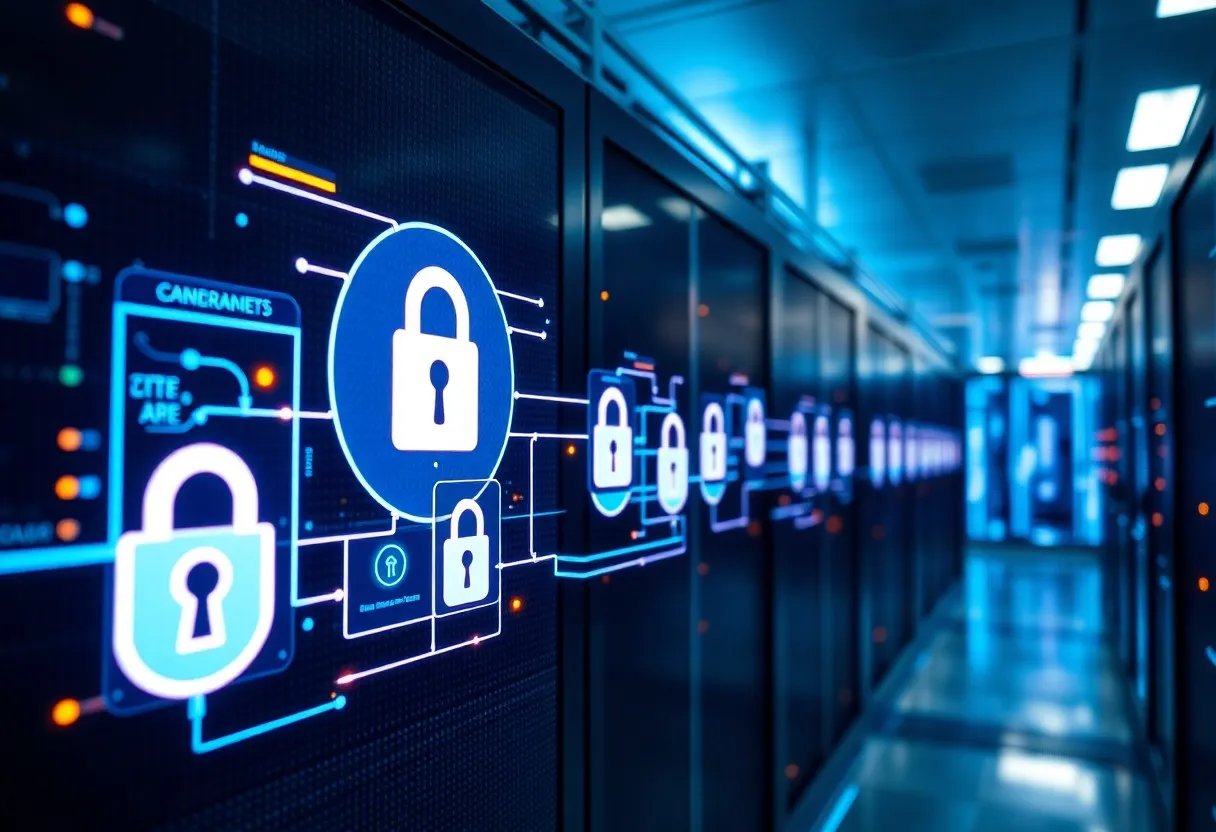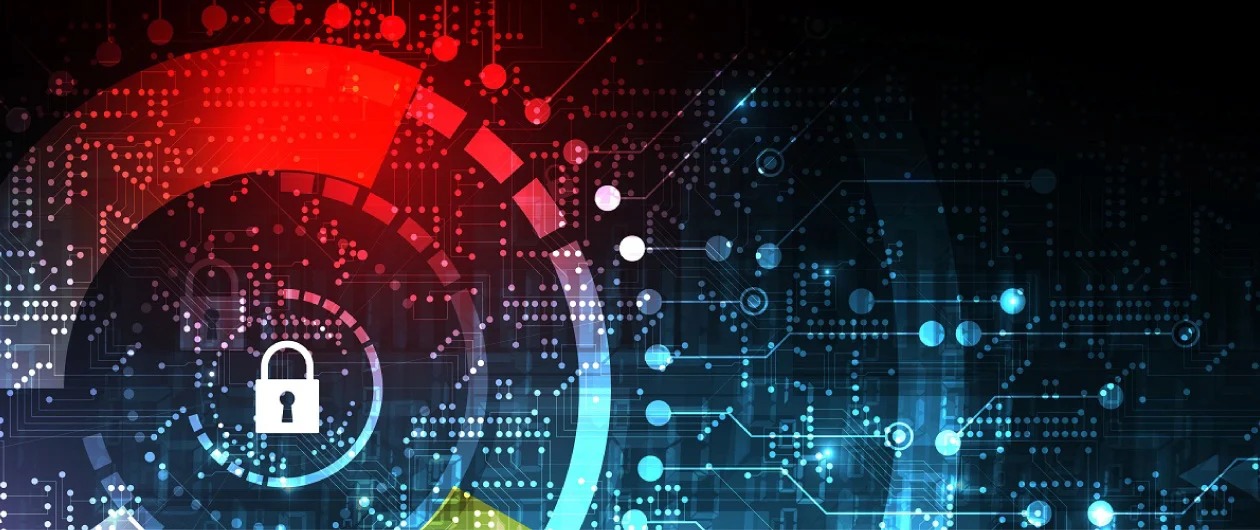Data Security
End-to-End Solutions to Empower Your Business
File Security
In data security, file security is a security approach that aims to protect sensitive data. This approach is designed specifically to ensure the security of electronic files. File security includes the following basic components:
Encryption: Encrypting files helps protect data from unauthorized access. Encrypted files can only be accessed when proper authentication is performed.
Access Controls: File security provides access controls to limit users and processes’ access to files. This ensures that only authorized individuals can access files.
Monitoring and Auditing: File security solutions can record and monitor access to files. In this way, it is possible to investigate these events in the event of any security breach and identify those responsible.
Authentication: File security uses various methods to verify users’ identities. This ensures that only authorized individuals can access files.
Data Loss Prevention: File security includes measures to prevent data leaks and losses. It helps prevent data from being leaked or lost without permission.
Anti-Malware and Threat Detection: File security provides protection against malware and threats. Scanning files and detecting dangerous content is part of this process.
Backup and Recovery: File security facilitates backup and recovery in the event of data loss.
File security helps both individuals and organizations protect their sensitive data. Especially at the enterprise level, file security solutions are widely used to ensure the safety of customer information, financial data, intellectual property, and other critical information..

Data Encryption
It is a security method used to increase the security of sensitive data or files. This method ensures that the data or files are encrypted and only authorized people are allowed to access them. Encryption prevents the data from being accessed and understood by unauthorized people, thus increasing data security. Basic features of Data-File Encryption:
Data Encryption: Data-File Encryption involves encrypting the data itself. This can include text, documents, emails, images, videos, or any type of data. Data encryption renders the content of the data meaningless.
File Encryption: File encryption refers to the encryption of the entire file. When a file is encrypted, the entire content of the file is protected and only those with the correct password can read or open the file.
Encryption Key: An encryption key is a special string used to encrypt and decrypt data. Without the correct key, it becomes difficult or impossible to open the encrypted data.
Asymmetric and Symmetric Encryption: There are two basic types of encryption. Symmetric encryption is a method where the same key is used to both encrypt and decrypt data. Asymmetric encryption is a method where a different key performs encryption and decryption.
Data Signature: Data-File Encryption can be used to ensure the integrity of data. While data is being encrypted, a data signature is also created and this signature is used to verify whether the data has been altered or not.
Data Access Controls: Data-File Encryption offers the ability to control access to data. It ensures that data is protected when only authorized persons are granted access.
Data-File Encryption plays an important role in protecting sensitive data and files from unauthorized access and malicious attacks. Data encryption is a critical security measure in ensuring confidentiality and security, especially for sensitive information such as personal data, trade secrets, customer information, and the like..

Data Anonymization
Masking and anonymization methods for data security and privacy are techniques used to protect sensitive data and make it shareable. Explanation of these two methods:
Masking:
Masking is a method used to provide a certain level of privacy by preserving the original form of sensitive data. This method means deleting, changing or hiding some elements or characters of the data. Masking ensures that the data is protected in a meaningful way and at the same time does not reveal personal identities or sensitive information.
Examples:
Only the last four digits of a credit card number are visible,
Hiding the last digits of a social security number,
Masking certain characters of phone numbers with asterisks (*) or other symbols.
Anonymization:
Anonymization is a method used to make confidential or sensitive data anonymous by completely removing personal identities from the data. Anonymization prevents the identification of individuals or the return of personal information. Data is usually stripped of unique IDs, personal names, or other identifying information, leaving only actionable data.
Examples:
In healthcare data, patients’ names, dates of birth, and addresses are removed, leaving only the type of disease, age, and gender,
In survey data, individuals’ names and personal identification information are removed.
Masking and anonymization are effective methods for protecting data security and privacy. These methods are used especially when sensitive or personal data needs to be analyzed or shared. This ensures data security while preserving data usability. However, it is important to evaluate whether these methods are effective, as there is sometimes a risk that data that is completely anonymized or masked can be re-identified. Therefore, sensitive data handling and sharing guidelines should be carefully established..

Secure File Sharing
It refers to a process that includes a set of measures and methods used to keep sensitive data or files safe and securely shared. It is a security practice that both individuals and organizations implement to increase their cybersecurity and protect their data from unauthorized access.
The basic elements of secure file sharing:
Encryption: Encrypting files protects files during transmission and where they are stored. Encrypting both data and files helps protect them from unauthorized access.
Authentication and Access Controls: Access to files should only be granted to authorized individuals. Authentication and access controls ensure that files are accessible only to specific users or groups of users.
One-time Links or Permissions: Secure file sharing platforms allow users to create one-time links or permissions valid for a specific period of time to access files. This prevents the file from remaining open indefinitely.
User Education: Users should be aware that they need to be careful and follow security rules when sharing files. This prevents accidental compromise of sensitive data.
File Monitoring and Auditing: File sharing platforms provide tools to monitor/record who accessed files, when they accessed them, and what kind of actions they took. This helps detect suspicious activity.
Secure File Sharing Platforms: Using dedicated platforms or services that provide secure file sharing ensures that data is safe and regularly updated.
Data Classification: Classifying and labeling sensitive data ensures that this data is protected and shared correctly.
File Duration Limitations: Limiting the duration of file sharing permissions prevents the file from remaining open and potentially compromised.
Secure File Sharing is especially important for organizations with sensitive or confidential information, but it is also important for individuals to use such applications to protect and share their personal files. These methods are used to protect privacy and increase data security.

Data Classification And Labeling
Data classification and labeling are operations performed to process, organize and transform large data sets into usable information. These two terms are generally used in the fields of data analysis, machine learning and artificial intelligence. Here are detailed explanations of these concepts:
Data Classification:
Data classification is the process of separating data sets into specific categories or classes. This process involves determining which category a data belongs to. Classification is widely used in supervised learning methods.
Data classification is done using different algorithms. For example, algorithms such as logistic regression, decision trees, support vector machines (SVM), artificial neural networks are used in classification processes.
Application areas: Email spam detection, customer segmentation, disease diagnosis, image recognition and more.
Data Labeling:
Data labeling is the marking of data sets with specific labels or descriptions according to their content. This process is especially critical when creating training data for supervised learning. Labels help algorithms understand data and use it in the training process.
Data labeling is usually done manually, but automatic labeling or semi-automatic labeling techniques can also be used on large data sets.
Application areas: Object recognition in images, audio analysis, language processing, text classification, and more..

Sensitive Data Discovery
It refers to a process that includes a set of measures and methods used to keep sensitive data or files safe and share them securely. It is a security practice that both individuals and organizations implement to increase their cybersecurity and protect their data from unauthorized access..

Data Deletion
Data deletion is the process of permanently removing data stored on a website or digital platform. In terms of cybersecurity, this process aims to completely clean sensitive or unwanted data from the system as part of privacy and security policies.
Here are the basic elements and importance of data deletion:
Protection of Privacy: Data deletion ensures that personal and sensitive information is protected against unauthorized access. It is especially critical for websites that process users’ personal data.
Legal Compliance: Various privacy laws such as GDPR and CCPA require that user data can be deleted at any time. Data deletion is necessary to comply with these legal requirements.
Data Privacy and Prevention of Second-Hand Risks: Data deletion prevents data from being recovered when old devices or systems are disposed of. This is important to prevent data breaches and unauthorized access.
Physical and Logical Deletion Methods: Data deletion can include methods such as physical destruction of hardware, software-based deletion, and data overwriting. Which method to use depends on the type of data and security needs.
Permanent and Irreversible: Data deletion involves making sure that the deleted data cannot be recovered. This ensures that sensitive data in particular is unrecoverable.
Website Security: Data deletion for a website also includes deleting old user accounts, temporary files, or old database records. This reduces potential security vulnerabilities while improving the performance of the site.
Proper Management of Deletion Processes: Data deletion should be carefully managed and monitored by authorized personnel. This prevents accidental deletion of important data or data falling into the wrong hands.
Ultimately, data deletion is a critical process for securing a website or digital platform, protecting privacy, and ensuring legal compliance. When implemented correctly, it increases security by reducing the risk of data leaks and breaches.
-

Atlassian Magicer Global DDoS Protection | Global Network Security
Threat Deception and Honey Trap SolutionIt has become almost certain that attackers posing a threat to institutions or organizations will enter the network structure. An advanced method used to…
-

Nanodog FireWall MITRE ATT&CK Framework And Magic Quadrant Automate
Firewall/Network Configuration and Change ControlInformation infrastructures, there may be firewalls, attack prevention systems and network products from many different manufacturers. The compliance of the configurations on these components with…
-

Network Watcher And SOAR The Future of Security
Network Performance MonitoringProblems experienced in network infrastructures should be detected before they affect the workflow. It is important to understand whether a problem experienced in the application is caused…
-

Network Access Control And Global Threat Hunting Insights
Network Access ControlToday, corporate networks serve many traditional and non-traditional systems, as well as tablets, smartphones, industrial control systems, virtualization platforms, wireless access points and cloud-based applications. Infrastructures with…
-

Managed Detection and Response (MDR) Service And AI-Powered Cyber Defense
Managed Detection and Response (MDR) ServiceMDR (Managed Detection and Response) service is a service that monitors the security indicators and metrics of the relevant systems of organizations 24/7 and…
-

Managed Security Services And Zero Trust Security Solutions
Managed Security ServicesThis is a service provided for small/medium/large Institutions/Organizations that use or intend to use security products but do not have sufficient human resources, experience and competence or…